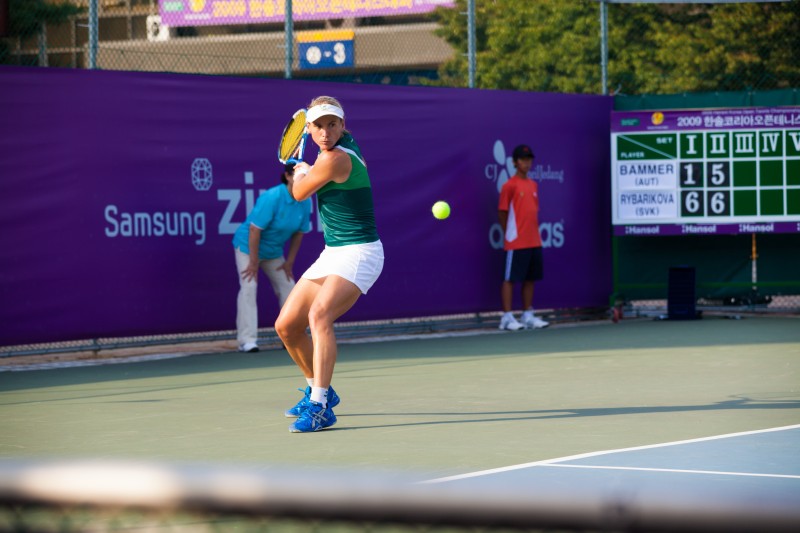
Introduction
Prior to downloading and reading Nate Harvey’s Conjugate U, I was like every other powerlifter, strength coach, barbell enthusiast, and general meathead, aware of the Conjugate Method as presented and made famous (or infamous) by Louie Simmons and the crew at Westside Barbell. However, knowing of something is not the same as knowing about something, and I, perhaps like many of the aforementioned groups, had a basic understanding of what the Conjugate Method was and I knew the Spark Notes version of its layout: Max and Dynamic Effort days, the utilization of accommodating resistance, an almost exclusive use of box squats, and the rotation of primary movements. I knew that it was not exclusively a powerlifting method or system, just as Block Periodization, DUP, or 5/3/1 are not exclusively powerlifting programs or methods. Although I was curious to see how it would work when used in a collegiate strength and conditioning setting, I didn’t know enough to implement it with any sort of confidence.
However, after reading Conjugate U, which presented the Conjugate Method in a clear, concise, and well-packaged manner, I felt that I knew at least enough to be dangerous, so I moved forward with implementing the Conjugate Method with my women’s tennis team.
Overview
I implemented the program during the Spring semester, which is the competitive season for tennis. I was hesitant about starting a new system, or adopting a new method, while in season, but I decided that I would just take it one week at a time, progress slowly, teach the athletes how to do things correctly, and, if things started to go haywire, back off and return to what we had been doing (5/3/1—great for developing overall strength and power, in case no one knows yet).
I had tennis twice a week, on Tuesday and Thursday. During the competitive season, I was usually got both sessions in; however, there were some weeks, as with all sports and teams, when the Thursday session was either outright canceled due to travel, or, at the request of the sport’s coach, modified and used as either a recovery or low-intensity day.
The traditional Conjugate Method calls for four training sessions per week—two Max Effort days and two Dynamic Effort days. As stated above, we were only able to train twice per week—so I scheduled the training sessions as follows:
- Week 1: Tuesday—ME Lower; Thursday—DE Upper
- Week 2: Tuesday—ME Upper; Thursday—DE Lower
- Repeat
Again, I wasn’t always able to get both days in, especially as we got closer to the conference tournament, and if I knew that I wasn’t going to get that second day, I usually tried to include some aspect of it on the first day, but without overloading the athletes and negatively affecting their competition.
Image credit: Pius Lee © 123rf.com
Programming
In the book, Nate discusses and outlines, the use of “lanes” for each of the four training sessions, with options for each of those lanes. Because we were in season and because I didn’t want to have too many things going on at the same time, I kept things simple and stuck with the more traditional templates for both the ME and DE days, meaning that on the ME days, whether lower or upper, the athletes typically worked up to a 1RM or to a weight that was just shy of a “true” 1RM while maintaining good technique. I also utilized the three-week pendulum wave for DE Lower days, while staying somewhere around the 30%-40% range for DE Upper days. I understand that the point of the Max Effort Method is to move a maximal amount of weight, and, as touted by both coaches and lifters, to teach an athlete or lifter to strain, with weaknesses being exposed as form breaks down under a maximal load. While I agree with this, my tennis players were not powerlifters, and I had to make sure that what we were doing was going to have a positive impact on their athletic performance and that we avoided injury.
Now before anyone bellies up to the keyboard and types, “Just teach them good technique and they won’t get hurt,” they had good technique. I strongly believe in the value of good, solid technique, and constantly preach, coach, and reinforce it with my athletes. However, collegiate athletes are at school to do two things: 1) graduate and 2) play their sport. Strength training, no matter how much we as strength coaches may want it to be otherwise, will always be, at best, tertiary in the hierarchy, and perhaps even lower for athletes who don’t like to train. As such, I made sure to shut an athlete down before they reached true maximal effort, but still liked to ride the line as much as possible—after all, what’s the point of doing ME work if it’s not ME? As a disclaimer, I didn’t utilize the Conjugate Method during our off-season training—had I done so, I think I would have pushed harder, but again, an athlete’s respective sport should always come before strength training.
So again, with ME work, we stuck to singles and typically did not use drop down sets. Because we were in season, I wanted to make sure that my athletes could recover from the volume and continue to make progress in their sport-specific training (practice).
With our DE work, we used the three-week pendulum wave as outlined by Louie Simmons for our DE Lower days and would operate between 30%-40% for our DE Upper days. Below is an example of how I laid out both of the DE days:
DE Lower
- Week 1: Box Squat, 50% +25% chain weight, 12x2; speed pulls, 50% +25% chain weight, 10x1
- Week 2: Box Squat, 55% +25% chain weight, 10x2; speed pulls, 55% +25% chain weight, 10x1
- Week 3: Box Squat, 60% +25% chain weight, 8x2; speed pulls, 60% +25% chain weight, 8-10x1
*We would always box squat to a parallel box, and typically pulled sumo on DE Lower days.
DE Upper
- Week 1: Floor Press, 30% +25% chain weight, 9x3 (3 different grips)
- Week 2: Floor Press, 35%* +25% chain weight, 9x3 (3 different grips)
- Week 3: Floor Press, 40%* +25% chain weight, 9x3 (3 different grips)
*I would only increase bar weight if the week before moved fast. We didn’t have Tendo units, so it was just an eye test, and if the weight wasn’t moving fast enough, we’d stay at that percentage for the next week. For me, speed was the most important aspect of DE Upper training.
Every Lower training session, whether ME or DE, started off with a jump variation. We started off simple—box jumps, usually at 3-4x5, increasing height as able from week to week and progressed to seated or kneeling box jumps as each athlete was able. One thing I’ve found in collegiate strength and conditioning is that not every athlete on the same team can do the same thing—obviously this makes sense, given body types, muscle fiber distribution, lever lengths, motivation, etc., but it took me a while to be okay with it. I arrived at the conclusion that as long as every athlete was giving me her best effort, I couldn’t get upset or frustrated—some athletes are more explosive than others, and some are stronger than others, and not everyone is going to be good at everything. So, if one athlete was no longer getting a novel stimulus from box jumps, she would progress to something more challenging, while an athlete who perhaps needed more time to master a movement, or was still gaining novel stimulus from a basic movement like box jumps needed to continue along her current trajectory, then she stayed there.
I know that line of thinking might fly in the face of the Conjugate Method, which preaches rotation of movements in order to prevent accommodation, but the way I saw it was that if an athlete was continuing to adapt to a stimulus and had not yet reached the point of accommodation, then why force a change that might prove detrimental? Variety without purpose is just randomization and is not a beneficial way of inciting progress and development.
Every Upper training session, whether ME or DE, started with a throw, which, due to equipment and facility limitations, was limited to a reactive/ballistic medicine ball floor press. Thinking back, we could have done some form of ballistic or dynamic push-up, but I didn’t think the athletes were capable of doing something like that with the appropriate intent or effort, and really, the throws were more of a CNS primer than anything, so I don’t regret sticking with one movement. I did challenge the athletes to increase their weight as they were able—most of the girls used 10-pound medicine balls, with one or two of the stronger girls using 15 pounds. Typically, the total volume stayed the same from week to week—I wanted them to get 20 total throws in, and I would vary the per-set volume from 5’s to 10’s as I saw necessary. If the athletes killed it one week and crushed their sets of 5, we’d move to 2 sets of 10 the following week. If they slowed down, we’d drop back.
ME sessions, both Lower and Upper, had a secondary strength movement programmed in after the primary movement (BB RDL on ME Lower, Z-Press on ME Upper) to address aspects of development not addressed by the primary movement, and these were typically performed at high intensity and low volume (3-4x4-6, not ME). DE sessions did not have secondary movements prescribed, given that on DE Upper days the athletes had already done ballistic throws, and on DE Lower days they squatted and then pulled.
Each session, regardless of ME/DE or Lower/Upper, was rounded out by 4-6 accessory movements, with moderate to moderately-high volume (3-4x8-10), that typically reflected the emphasis of the day (lower body accessories on Lower days, upper body accessories on Upper days). My primary concern when programming accessories was to address those areas that are typically underdeveloped in athletes—the muscles of the posterior chain (addressed via GHR’s, Reverse Hypers, leg curls of all types, SL RDL’s, back extensions) and the upper back (addressed via rows, pull-ups, high volume band pull-aparts, rear delt work). We also placed a heavy emphasis on training the core (or the trunk, or whatever you want to call it), and typically did so via anti-rotation or static holds (plank variations, SA carries and holds, 90/90 anti-extension), but we also did high-volume direct ab work (GHR sit-up, twists, toe touches, and band crunches).
Image credit: Pius Lee © 123rf.com
Exercise Selection and Accommodating Resistance
I wanted to keep things simple, especially since, with the Conjugate Method, it’s easy to “over-Conjugate” things and start throwing bands and chains on everything.
Regarding accommodating resistance, I see things from two perspectives. First, I believe that anyone can learn anything and that, as coaches, we shouldn’t be afraid to expose our athletes to novel ways of training. However, I do believe that each athlete should have a solid foundation in a movement before introducing bands or chains. You have to learn to ride a bike before learning to do a wheelie.
Again, I kept things simple. On ME Lower days, we box squatted with either a straight bar or an SSB, and either against a chain or a straight weight. I love bands, but our weight room setup didn’t allow for the efficient use of bands, so we stuck with chains. We didn’t deadlift, but we should have. That’s one thing I would change if I had the opportunity to go back, and it’s something I’ll address in the future. On ME Upper days, we floor pressed, with either a straight bar or a football/American Press bar. I had never taught the tennis players how to bench, and maybe I should have, but the floor press went just fine, and we addressed full ROM upper body work through DB exercises. With the floor press, we would either use straight weight or chains and rotate grip position on both bars.
Remember, because of our schedule, we only did each session (ME/DE Lower/Upper) twice a month, so there wasn’t much need for a large variety of exercises, movements, or variations. Typical, or average, chain weights for each day are listed below:
- ME Lower: 40-80 pounds
- DE Lower: 40 pounds
- ME Upper: 20-40 pounds
- DE Upper: 20 pounds
With our speed pulls on DE Lower day, we would sometimes utilize bands, typically mini’s from elitefts (reds for those who aren’t familiar with the nomenclature), and an athlete would drape one over the bar and then stand on it, using a sumo stance. It wasn’t foolproof and took some adjustment, but I think that it created enough training to be worth doing.
Takeaways and Other Thoughts
At the end of the day, wins and losses are the responsibility of the sport coach and the athletes, but what we do as strength coaches can have an impact, positive or negative, on performance. This past season, our tennis team won its conference championship for the first time since 2002, after we started using the Conjugate Method. I’m not saying that training Conjugate was the difference between earning a ring or not, but it sure didn’t hurt.
The athletes got stronger and more powerful, that’s undeniable, and, in my opinion, all other things being equal, the stronger athlete will be the more successful athlete. There are definitely things that, moving forward, I would like to improve, especially regarding programming, periodization, and conceptualization of a training block or cycle. I think that, as with all programs/methods/systems, but especially so with Conjugate, given the seemingly random nature of its progression over time, it’s easy to just make things up as one goes, and, sometimes, as long as there’s a rhyme and reason to the extemporaneousness, that’s okay. The collegiate athletic environment is a sort of structured chaos, with games, travel, practice, unexpected complications, etc., and I think it’s important to be adaptable in the face of that chaos. However, I also think it’s important to have some sort of framework or foundation to build on, so that even if the path to success and victory isn’t purely linear, it’s still moving in the right direction.
Header image credit: Mykhailo Orlov © 123rf.com
Jim Seratt received his Master’s of Science in Health Promotion and Wellness Management from Missouri State University, where he served as a Strength and Conditioning Graduate Assistant for two years. He can be reached at jseratt.cscs@gmail.com.













1 Comment